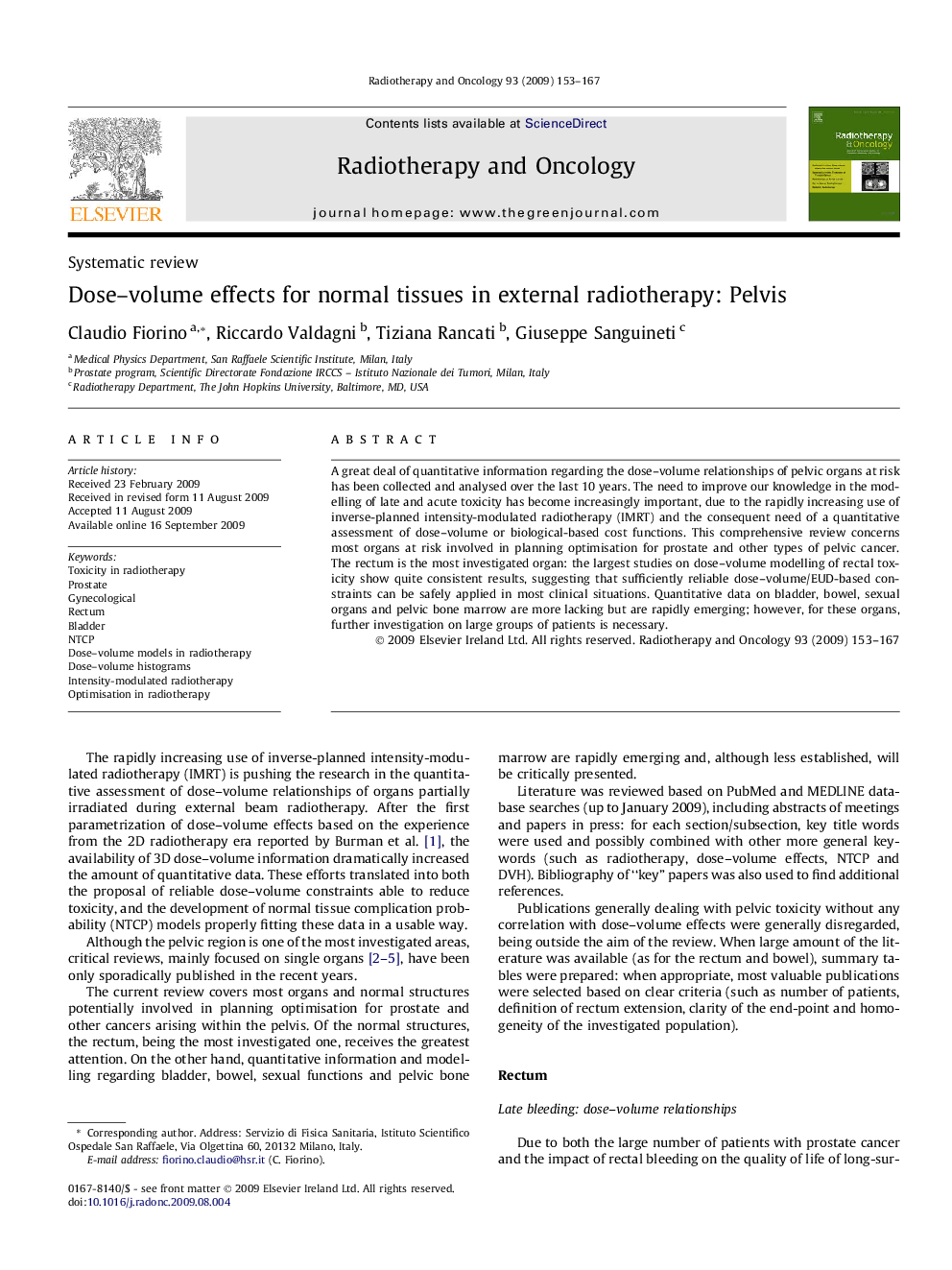| Article ID | Journal | Published Year | Pages | File Type |
|---|---|---|---|---|
| 2159775 | Radiotherapy and Oncology | 2009 | 15 Pages |
A great deal of quantitative information regarding the dose–volume relationships of pelvic organs at risk has been collected and analysed over the last 10 years. The need to improve our knowledge in the modelling of late and acute toxicity has become increasingly important, due to the rapidly increasing use of inverse-planned intensity-modulated radiotherapy (IMRT) and the consequent need of a quantitative assessment of dose–volume or biological-based cost functions. This comprehensive review concerns most organs at risk involved in planning optimisation for prostate and other types of pelvic cancer. The rectum is the most investigated organ: the largest studies on dose–volume modelling of rectal toxicity show quite consistent results, suggesting that sufficiently reliable dose–volume/EUD-based constraints can be safely applied in most clinical situations. Quantitative data on bladder, bowel, sexual organs and pelvic bone marrow are more lacking but are rapidly emerging; however, for these organs, further investigation on large groups of patients is necessary.
